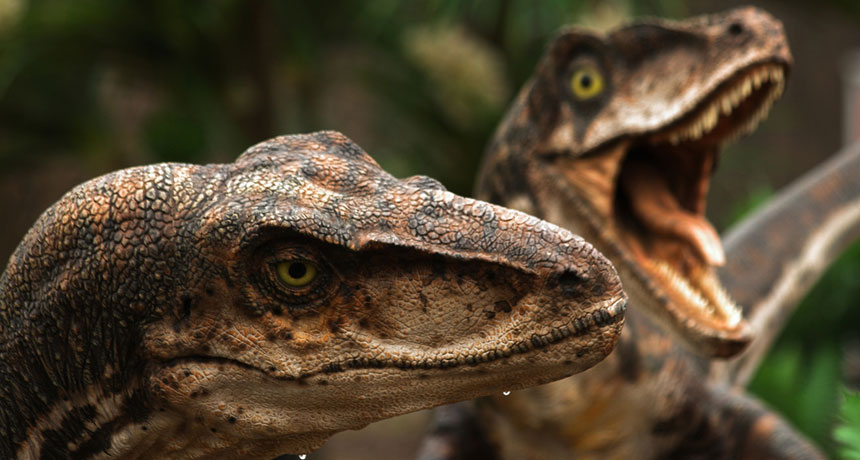Could the dinos of ‘Jurassic World’ become invasive?

Only fake dinosaurs populate the real Jurassic Park ride, at Universal Orlando. But if the real wildlife got loose, it’s not the dinos we’d have to worry about.
Josef Vybíral/Flickr (CC-BY-NC 2.0)
- More than 2 years ago
Last weekend I watched Jurassic Park for the first time in years. Still awed by the seemingly realistic, long-extinct animals, I started wondering: What would happen if they escaped the remote Pacific island where they had been created and made it to land? The only dino in the movie series to make it to a continent was a Tyrannosaurus rex in The Lost World: Jurassic Park. And it had been shipped to San Diego by stupid humans.
But the question seemed suddenly relevant when a mosasaur and some pterosaurs showed up in the trailer for Jurassic World, which opened this weekin theaters. If creating dangerous dinosaurs seemed like a bad idea, creating dangerous ancient reptiles that could swim and fly seemed even worse. (Mosasaurs and pterosaurs aren’t dinosaurs.)
But a single escaped mosasaur, pterosaur or T. rex could really cause only limited damage on mainlands (or open waters) of the 21st century. And if they were proving troublesome, people would eventually take care of them. After all, we don’t let escaped zoo lions or tigers roam free.
A real problem, as I see it, could happen only if one of these species became invasive. That is, some number of that species managed to become established in a new environment and there cause some kind of harm. But could any of the Jurassic Park menagerie manage that?
For a species to cross the line from nonnative to invasive, it has to have one or more of these traits:
- Lack of enemies in its new environment
- Tolerance for lots of different types of habitat
- Ability to compete with the native species for resources
- Quick growth and reproduction
Given their sizes, mosasaurs, pterosaurs and the large, charismatic dinos of Jurassic Park would probably lack natural enemies — other than each other — but humans definitely wouldn’t let them run amok. So I would strike out trait one. Without more information about the exact species resurrected by the Jurassic Park scientists, items two and three are unknowns. But they can’t be ruled out.
Number four is the tricky point. In the original Jurassic Park, all the dinos were bred to be female, so they couldn’t reproduce on their own. But some had clearly managed to do that (whether a few transformed into males or there was reproduction through parthenogenesis was never determined). So reproduction was possible, but how fast would it be? If we consider the qualities of today’s invasive species — such as rabbits, cane toads or domestic cats — we quickly see differences. These species all grow up quickly and produce offspring by the boatload. By contrast, the reptiles of Jurassic Park and Jurassic World are all medium- to large-sized reptiles that produce small clutches of eggs and probably take a long time to grow up. Populations of those animals would be slow to multiply, making establishment more difficult.
So, if some dinosaurs or other reptiles managed to escape the island and weren’t immediately wiped out by humans, maybe they could become invasive. But I think it highly unlikely.
There’s a bigger worry though: the plants. In Jurassic Park, at least one species of plant on the island had been resurrected from the past. The science behind that organism was never explained, but I bet other species were re-created as well.
With people moving on and off the island frequently, seeds or other plant material could easily travel to the mainland unintentionally. And if some people got it in their minds that there was money to be made from turning these ancient exotics into the next hot item for your garden, then the plants could end up just about anywhere. There are actually lots of invasive plants that got their start that way — purple loosestrife, for example.
Unlike with the reptiles, humans might not recognize when these species first arrive. That would make it more likely that they could become established in a new home. And eradicating invasive plants once they become established, while not always impossible, is usually pretty difficult. That’s why governments spend so much money preventing nonnative species from entering a country in the first place.
Thankfully, these scenarios are playing out only in my head. We have more than enough invasive species problems already.






